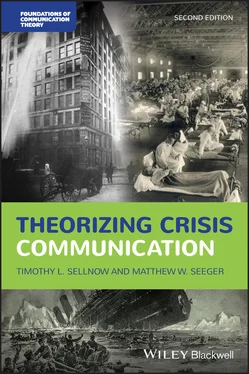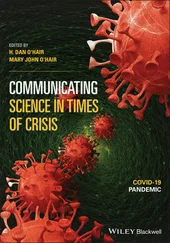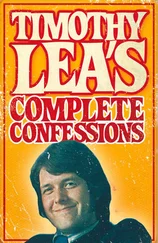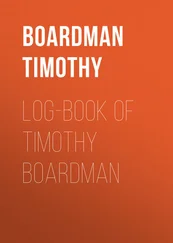1 ...6 7 8 10 11 12 ...22 Dance and Larson (1976) described three broad functions of communication: (1) regulating the behavior of self and others; (2) linking individuals with others and their environment; (3) developing higher mental processes and capacity. Regulating behavior primarily through persuasive processes is a fundamental communication function and represents an important tradition in communication inquiry extending back to the Greek rhetoricians. In fact, some views suggest that all communication is persuasive. Linking functions include both information exchange and linking to one’s environment but also the development of relationships. Information about the environment is necessary to make choices about how to behave. Finally, Dance and Larson suggest that communication processes are closely associated with cognitive processes and capacity. In other words, communication is an epistemology, a way of knowing and thinking. We have suggested that this functional approach may be particularly useful in understanding the communication activities associated with crisis management. These are outlined in Table 1.3.
Table 1.3Functions of Crisis Communication.
| Scanning |
(Monitoring and maintaining external relationships:and Spanning collecting information, building relationships with external stakeholders)Sensemaking of informationIssue managementSpanning agency, organization, and community boundariesRisk communication |
| Crisis Response |
(Planning for and managing crises)Uncertainty reduction, providing information and interpretations, warnings, evacuations notices, product recallsCoordination with key stakeholder and response agenciesInformation disseminationPromoting strategic ambiguity |
| Crisis Resolution |
(Restructuring, repairing, and maintaining relationshipsafter a crisis)Defensive messagesExplanatory messagesImage restorationRenewalGrieving and memorializing |
| Organizational Learning |
(Emerging from a crisis with enhanced knowledge, relationships, and capacity)DialogueNetworks and relationshipsUnderstanding and norms |
These functions, critical to effective response, suggest that communication is associated with a wide range of instrumental outcomes during a crisis. For example, communication is necessary to persuade people to prepare a personal crisis plan. In fact, the website Ready.govpromotes preparedness through a public communication campaign. A successful communication of evacuation notice is necessary to manage the harm of floods, hurricanes, and some forms of toxic spills. Public health officials sometimes describe communication as a form of “social Tamiflu,” referring to the antiviral medication used to treat influenza. Communication is the primary way public health officials can influence the behavior of publics in ways that can limit the spread of this infectious disease.
Given this range of definitions, concepts, and complexity of communication, is it possible to fully define crisis communication? Crisis communication could simply be understood as the ongoing process of creating shared meaning among and between groups, communities, individuals, and agencies within the ecological context of a crisis for the purpose of preparing for and reducing, limiting, and responding to threats and harm. This definition points to the diversity of communicators – both senders and receivers – involved and the instrumental and functional elements of communication during a crisis. Beyond this definition, however, is the fact that communication processes are sensemaking methodologies allowing individuals, groups, communities, and agencies to co-create frameworks for understanding and action even within the highly uncertain, demanding, and threatening context of a crisis. These events shatter the fundamental sense of normalcy, stability, and predictability we all count on in living our daily lives. They are disruptive, confusing, shocking, and intense events and making sense of them and reestablishing some new normal requires communication. Crisis communication processes are also made significantly more complex by the diversity of audiences, cultures, backgrounds, experiences, new technologies, and forms of crises. In addition, effective communication in these cases can literally be a life and death matter. Understanding the role of communication in these events, therefore, is critical.
The effort to do so has been driven by dramatic crisis events and has involved several research traditions. In its earliest iteration, crisis communication practice was a subfield of public relations and was directed toward identifying strategies to protect organizations facing accusations of wrongdoing. One of the first professional practitioners of public relations, Ivy Lee, helped manage press coverage of the 1906 Pennsylvania Railroad disaster involving a passenger train derailing on a bridge in Atlantic City. The disaster caused more than 50 deaths (Hallahan, 2002; Heibert, 1966). The principles of crisis communication were drawn largely from anecdotal insights, “war stories,” and later more formalized case studies (Coombs, 2010, p. 23). Although these early principles of crisis communication were anecdotal and did not draw on any established theory, they laid the groundwork for subsequent investigations, which began to develop in the 1980s. More systematic case studies and the application of rhetorical theory added to the earlier principles of practice and a coherent field of crisis communication began to emerge (Lachlan et al., in press). Erikson’s (1976) examination of the Buffalo Creek disaster, Fink’s (1986) analysis of the Three Mile Island Disaster, Seeger’s (1986) analysis of the Challenger Disaster, and Snyder’s (1983) and Benson’s (1988) investigation of the Tylenol poisoning and subsequent responses helped developed the case study approach to crisis. Much of the work was still descriptive and critical and depended largely on descriptive and rhetorical methods (Benoit, 1995).
As the field developed coherence, investigators began employing empirical methods to study crisis communication. This included both field studies of crises and disasters using survey questionnaires and laboratory investigations. Investigations of Hurricane Katrina (Spence et al., 2007), the terrorist attacks of 9/11 (Lachlan et al., 2009) as well as investigations of organizational responses to crisis (Coombs & Holliday, 2010) were often grounded in more formal theories, utilizing approaches that could be replicated to confirm results.
Other fields, including management, sociology, political science, anthropology, and public health also explored questions of crisis and communication. Of these, the work of Quarantelli (1988), Mileti and O’Brien (1992), and Wenger (1985) was especially relevant, focusing on questions of communication, coordination, warning messages, and media coverage. Disaster sociology in particular has developed a comprehensive body of work in communication. Investigators in management and organizational behavior approached crisis as an issue of strategic management responses. This included Shirvastava’s (1984) case study of the Bhopal Union Carbide Disaster, Perrow’s (1984) analysis of Three Mile Island, and Weick’s (1993) examination of the Mann Gulch disaster. Finally, the field of political science has explored government response to crisis. This includes Birkland’s (1997) work on disasters and the subsequent development of public policy agendas and Comfort’s (1994) examination of the Northridge earthquake resilience and coordination. Other fields, such as anthropology, public health, nursing, chemistry, tourism, agriculture, geology, and engineering have their own niche interests in crisis communication.
Today, crisis communication is a robust, interdisciplinary field with important areas for the application of research and theory. Crisis managers make use of the result of research and use theory to inform their decisions. Response agencies commission studies to answer specific questions. Researchers employ a wide range of methods and approaches to explore the preparation and planning, risk recognition, response, and recovery. An important part of this process has been the development of theories of crisis communication. Theory helps researchers organize and make sense of observations and provides focus to investigations. Theory can help expand our understanding and conceptualization of crisis communication. Practitioners can use theory to help predict and control what is often a very uncertain crisis condition. Finally, theories can challenge assumptions about crisis and the role communication plays.
Читать дальше












